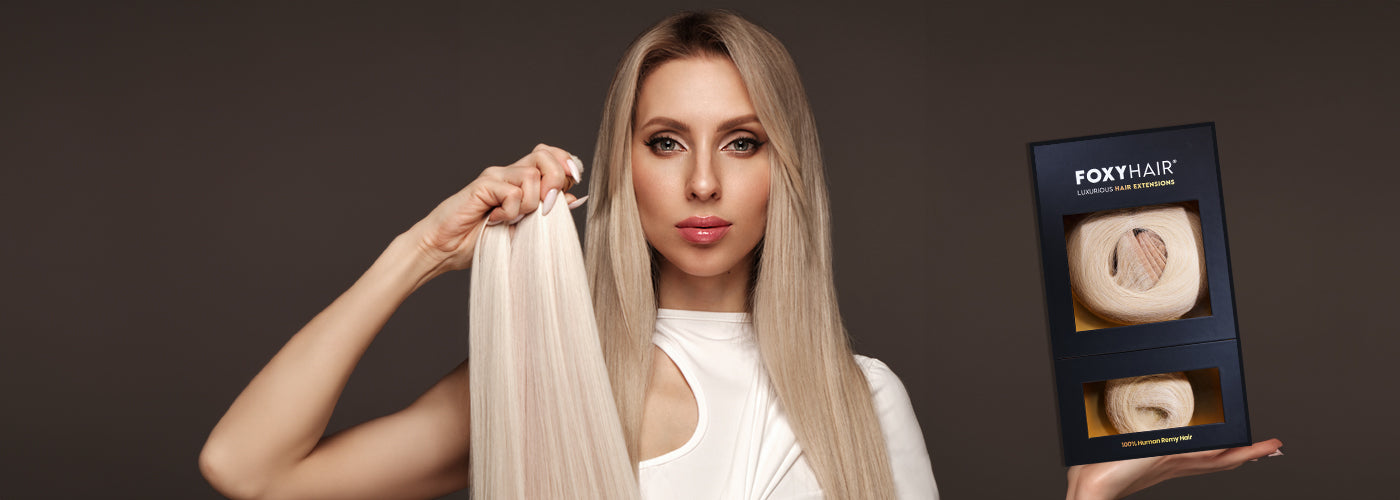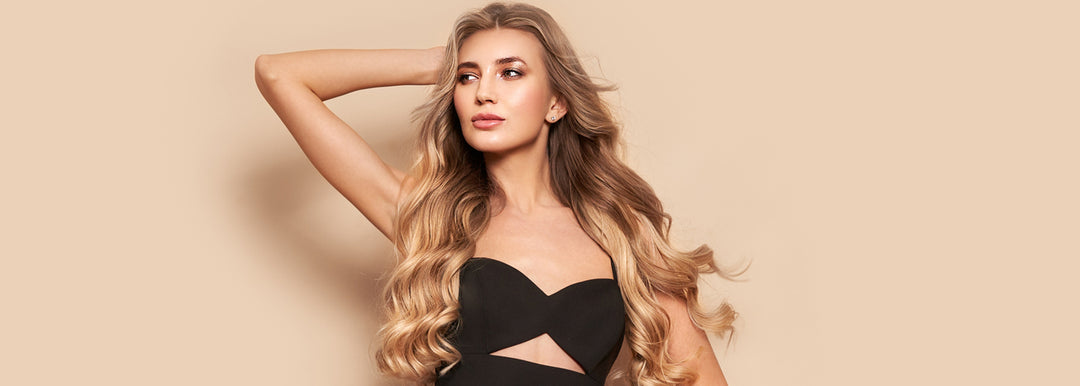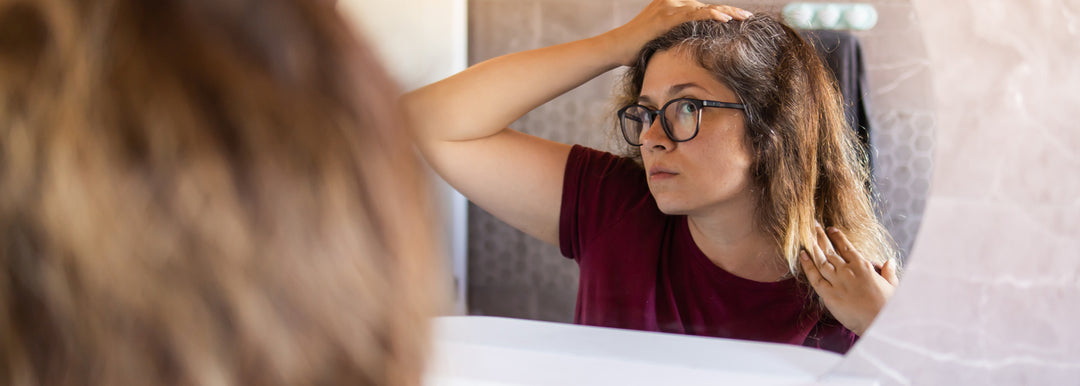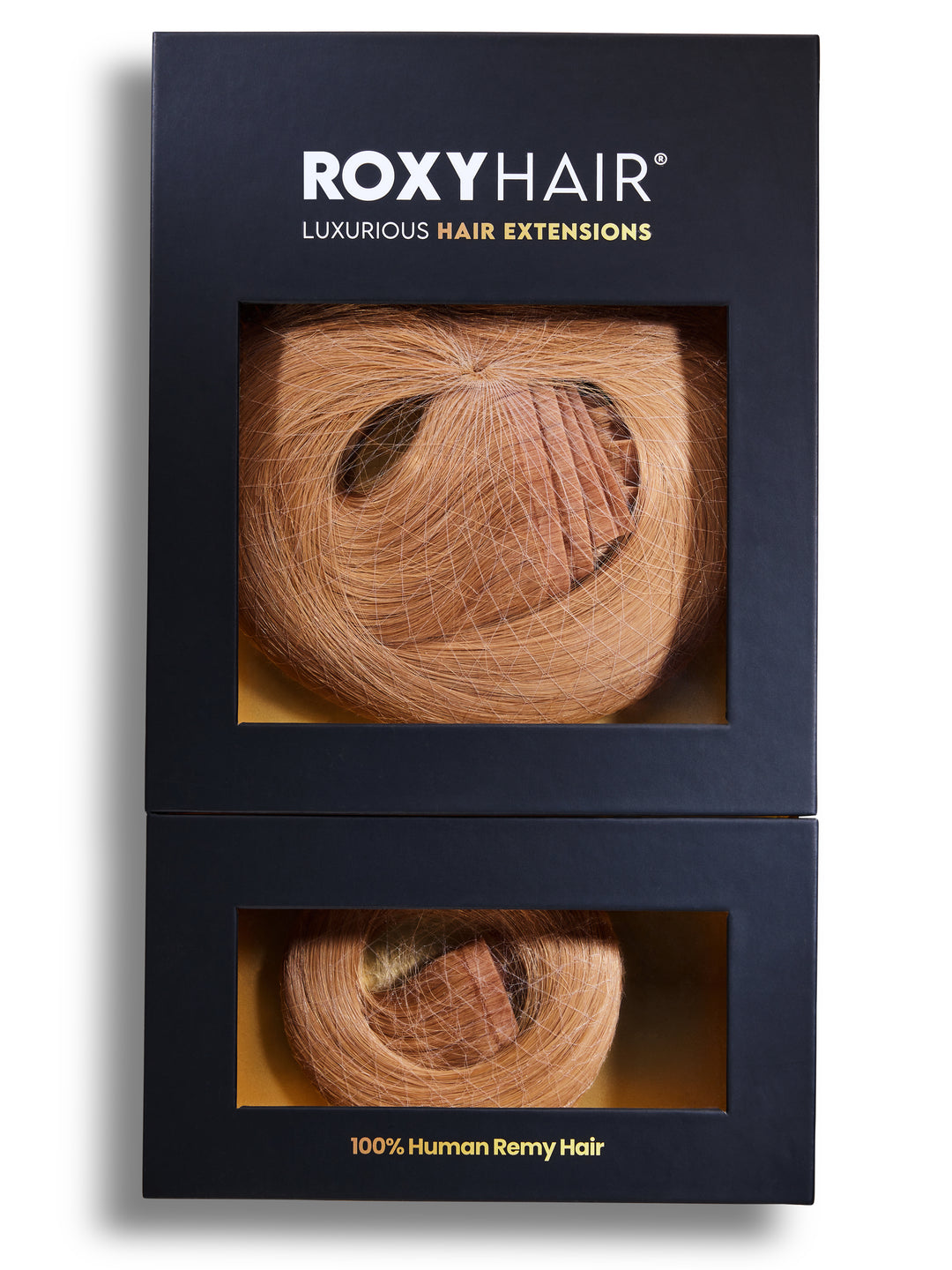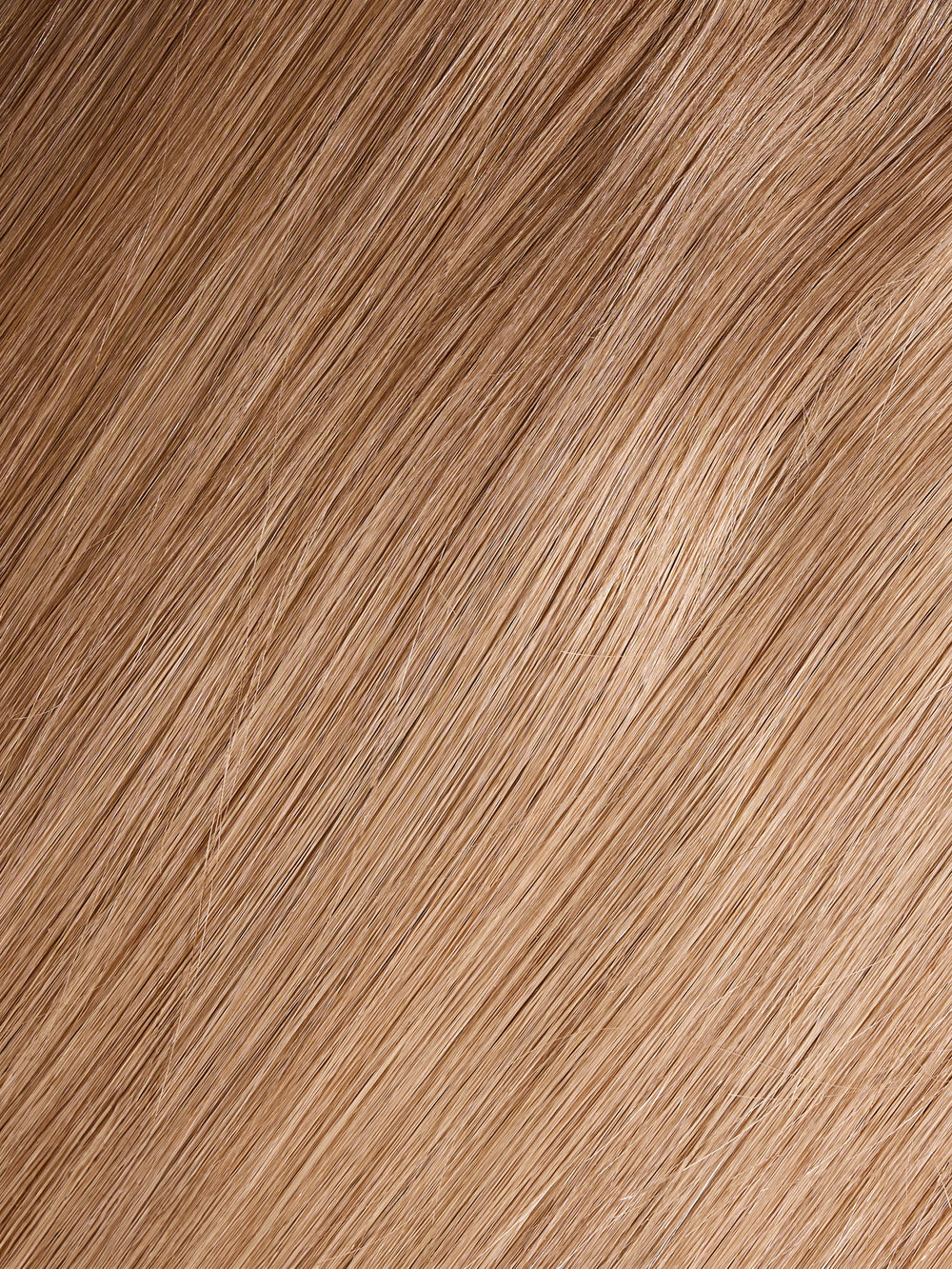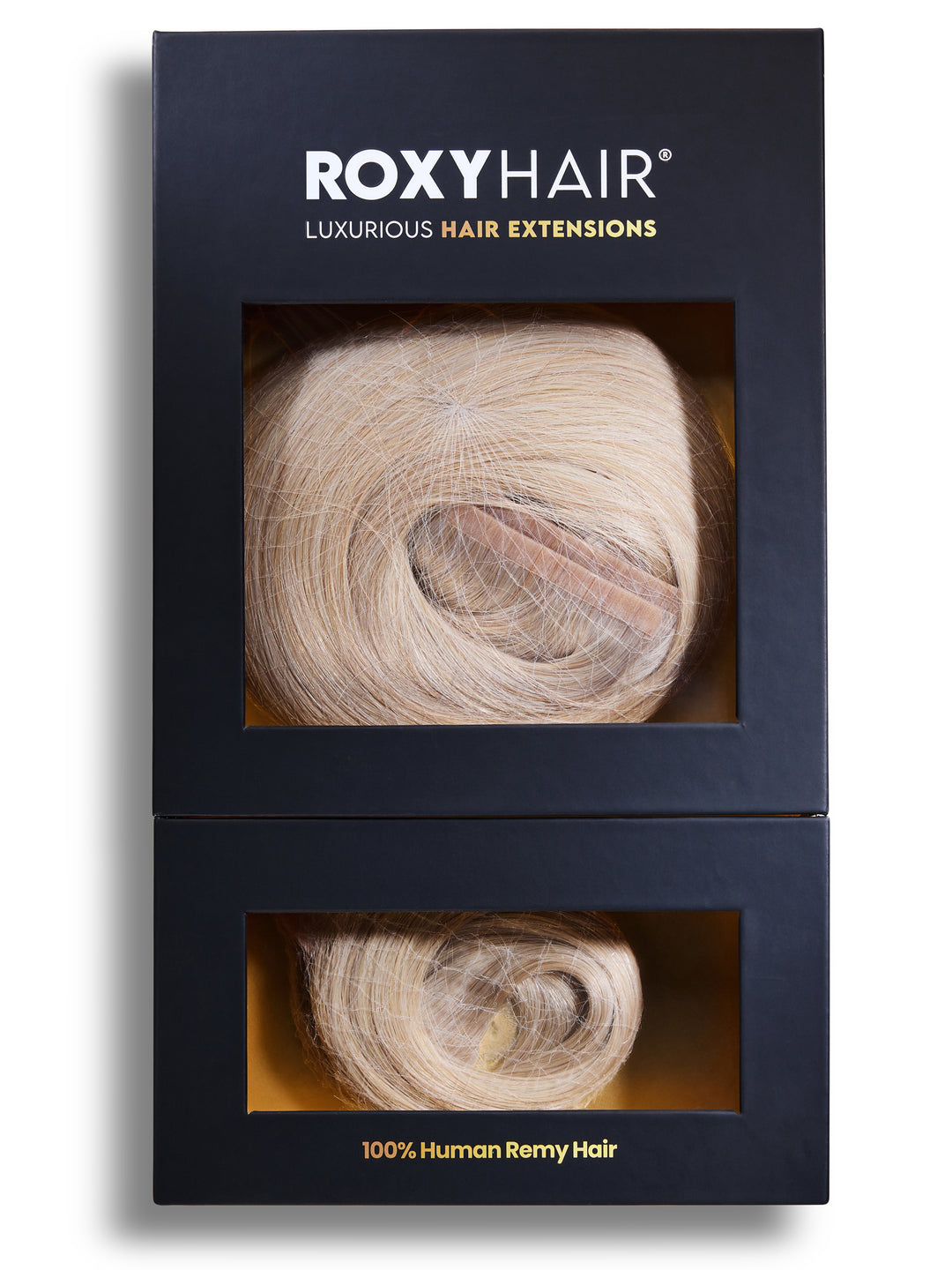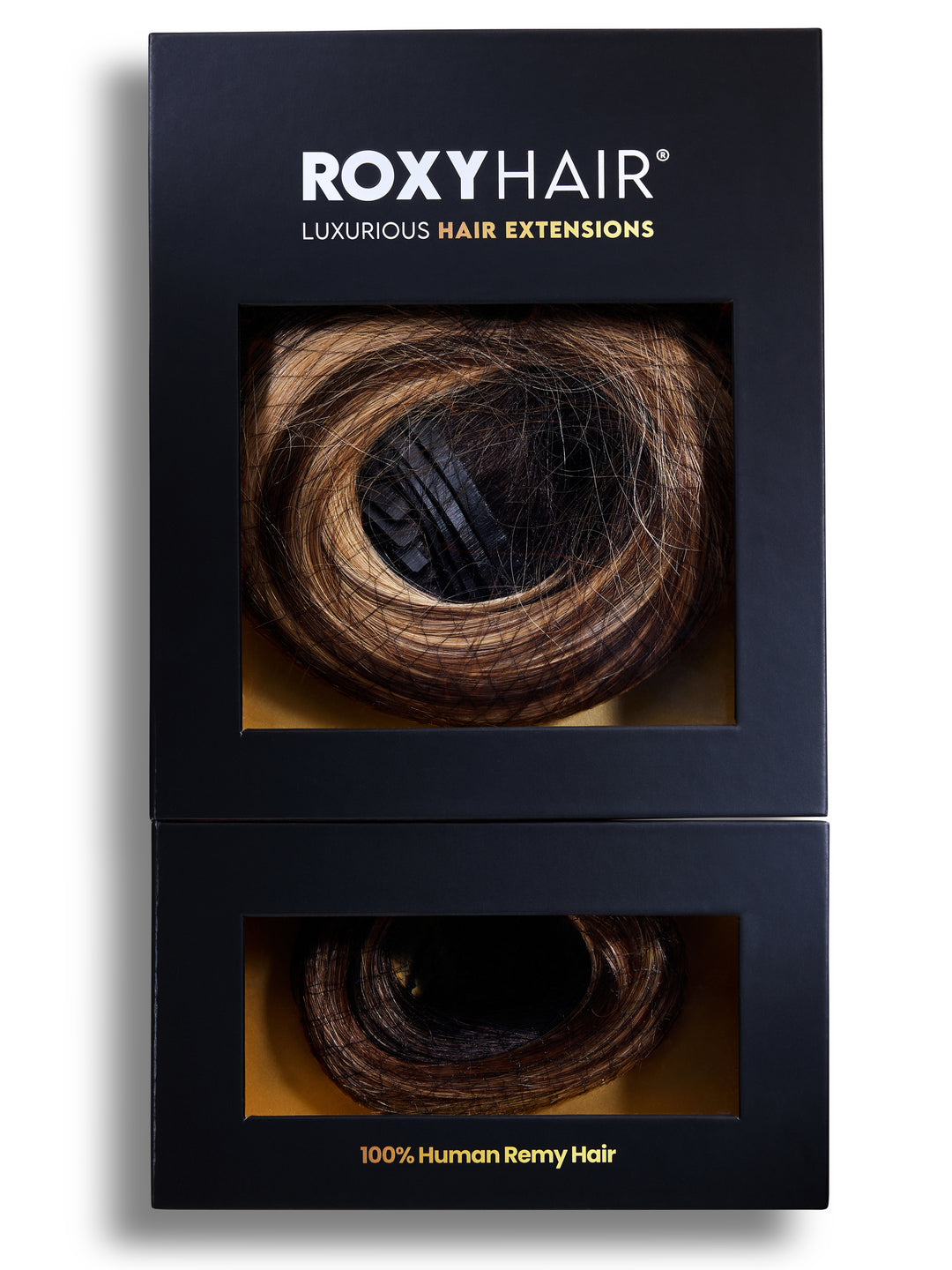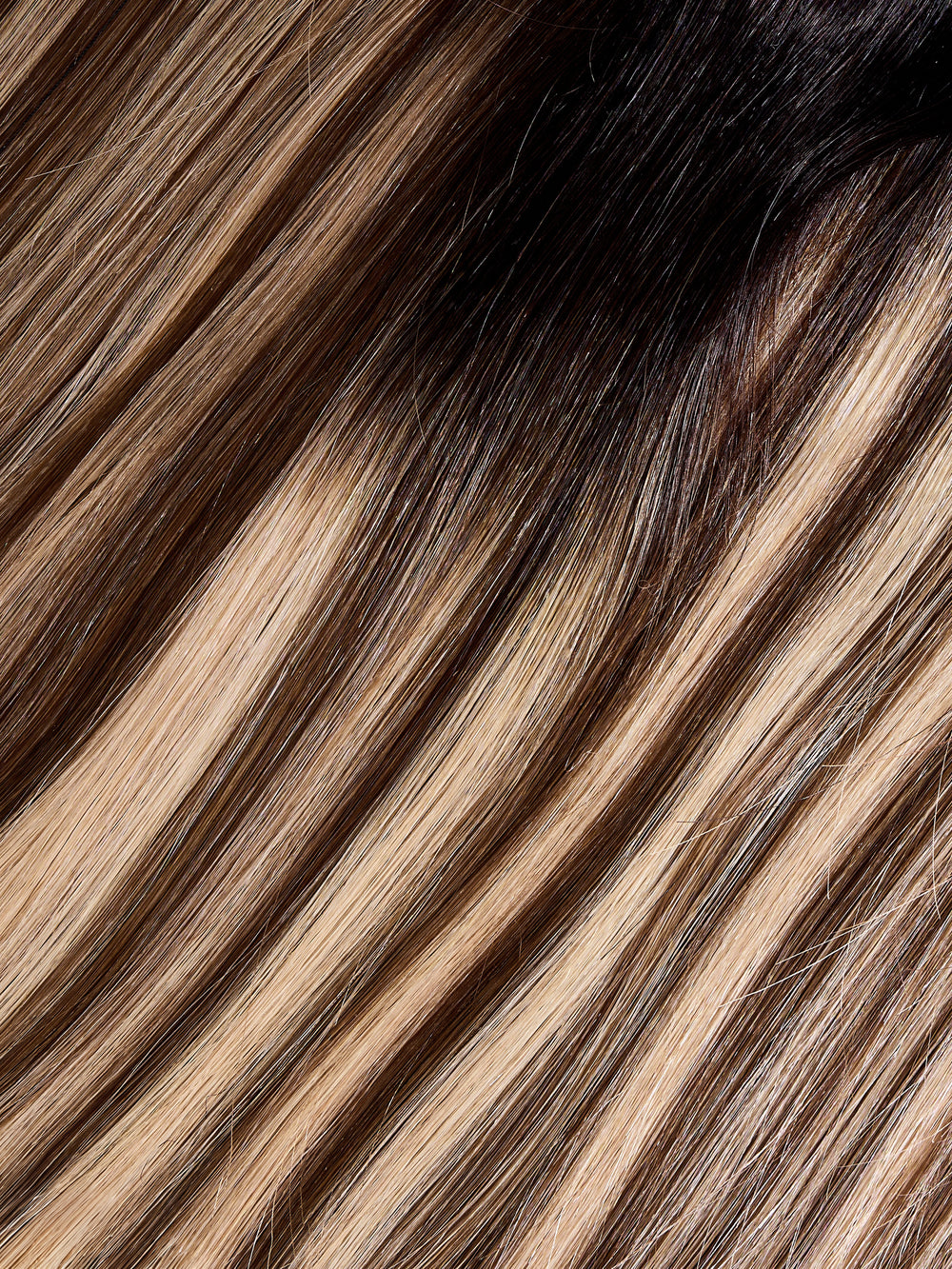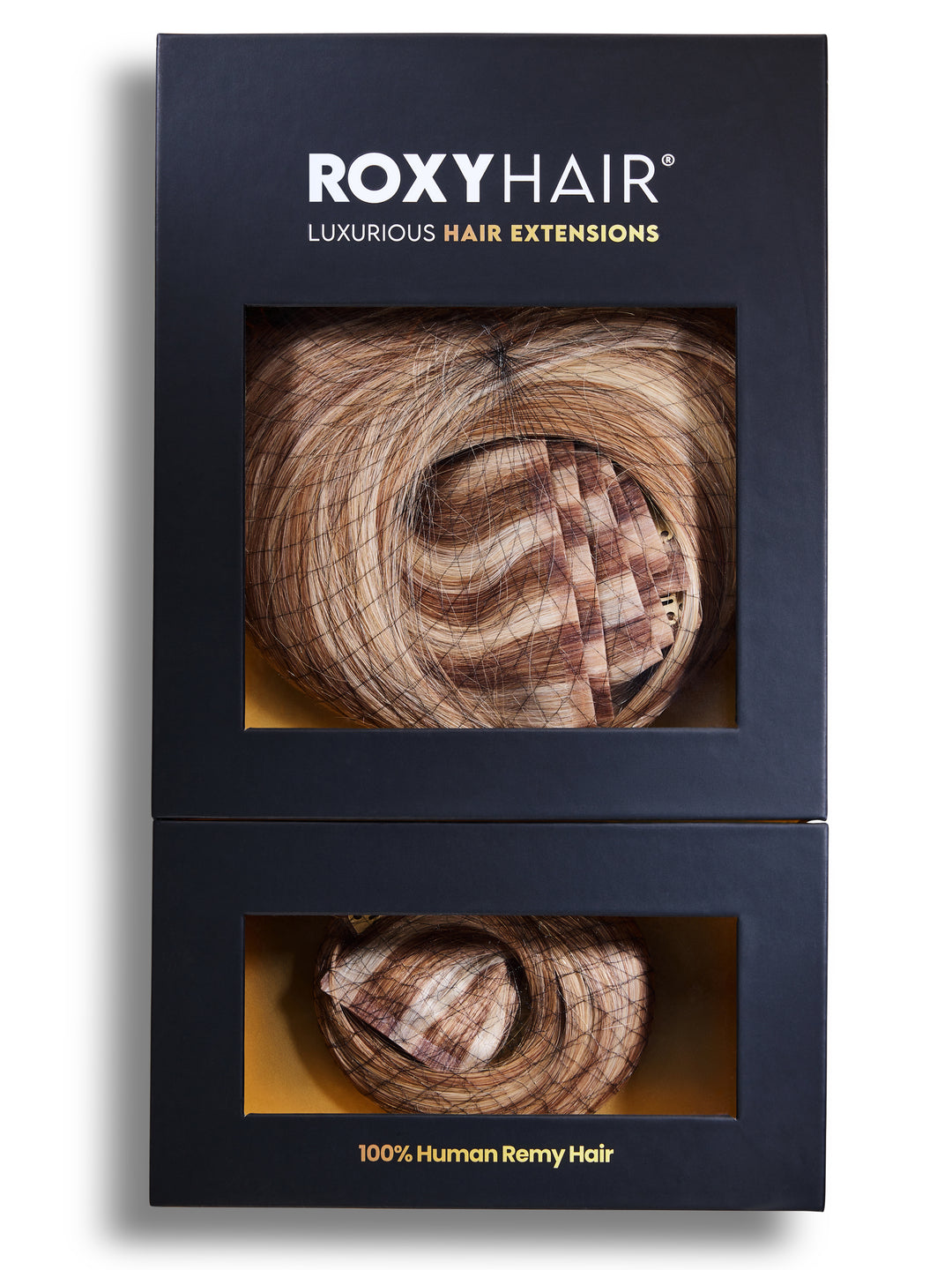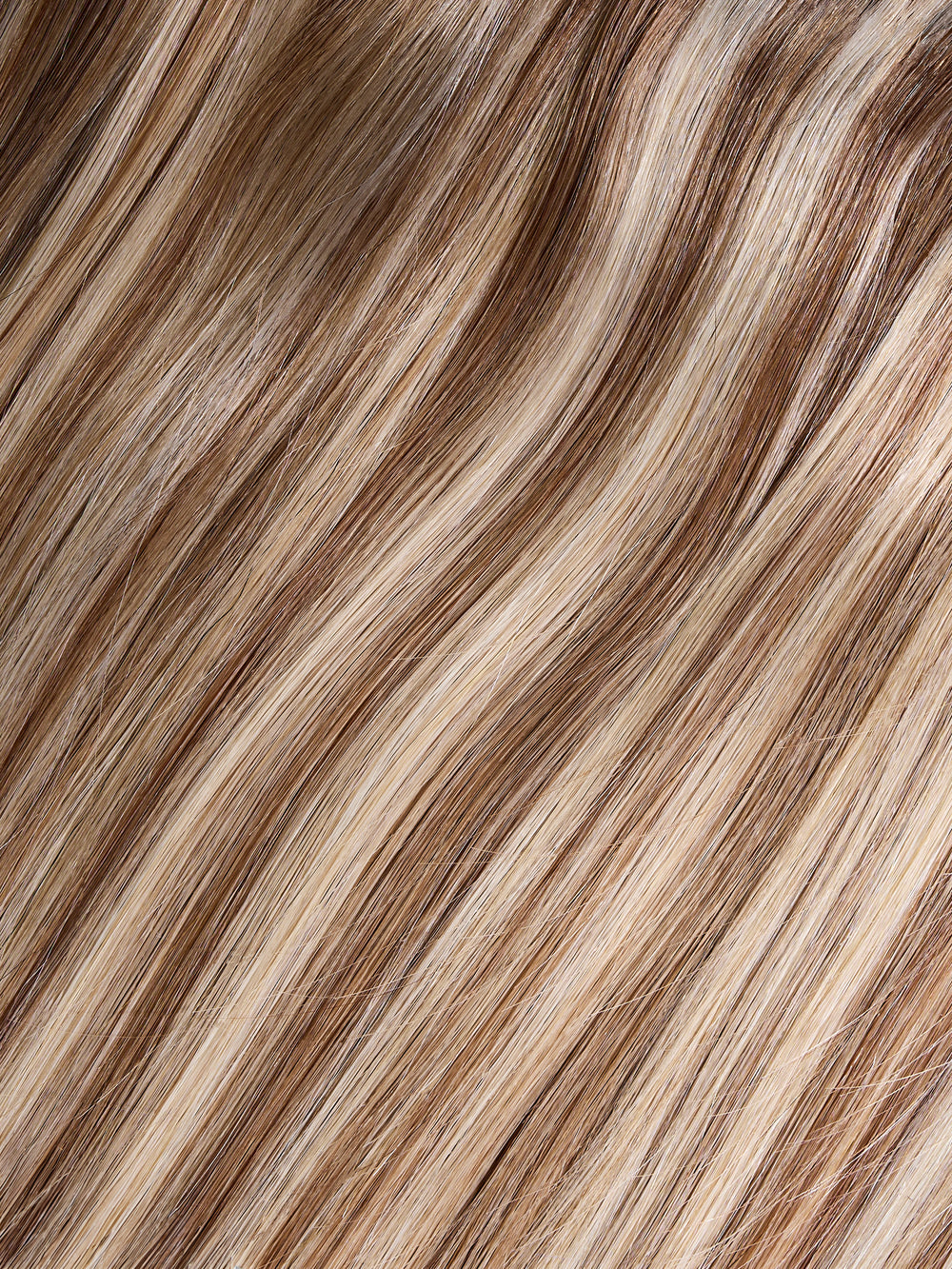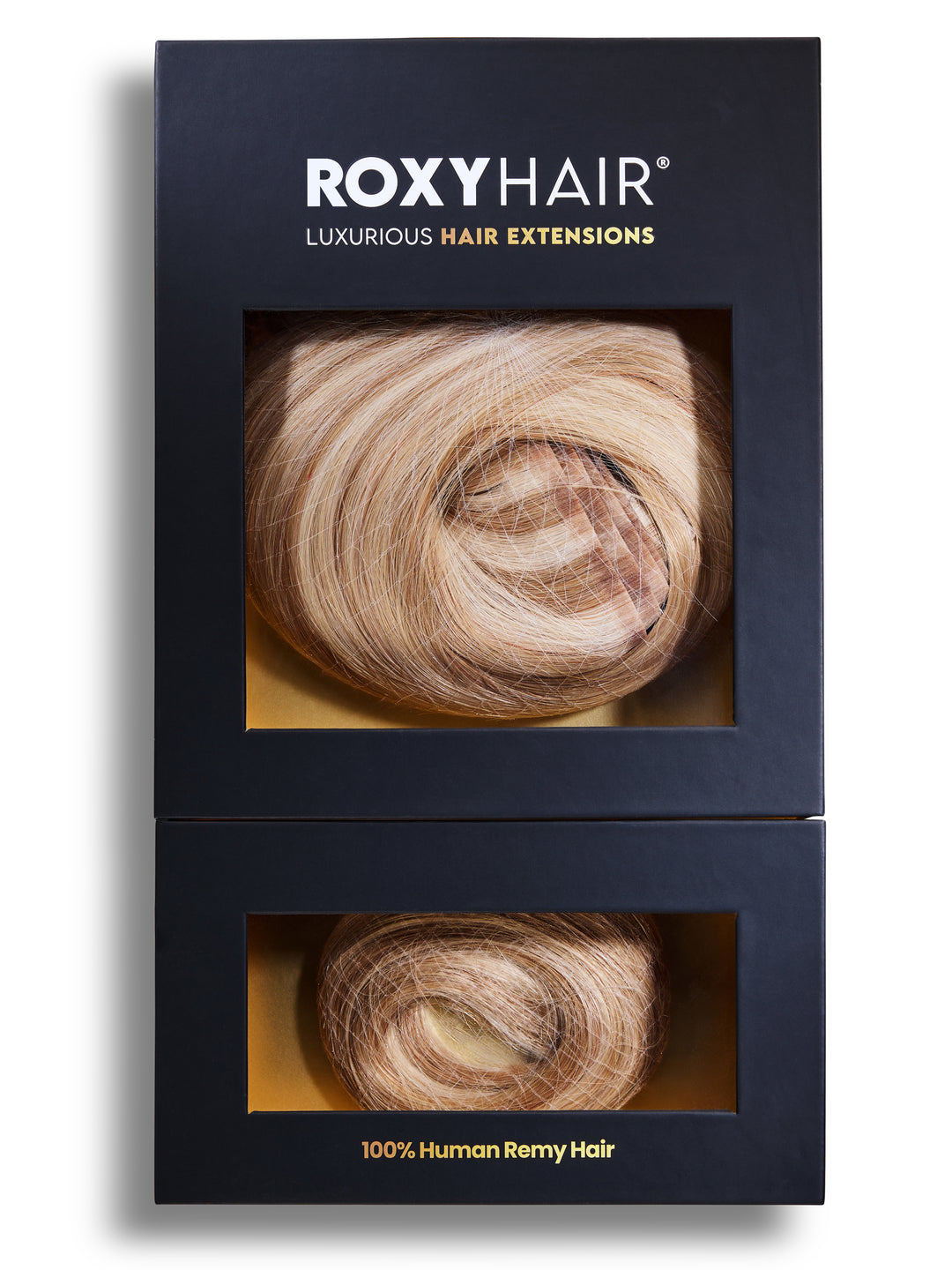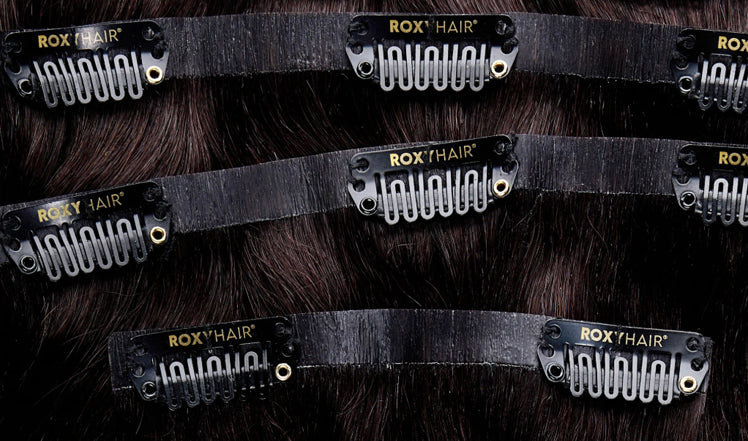Hair extensions have become much more popular and affordable these days. They can add extra volume and length to your hair. But if you're wondering how many rows of extensions do you need, this one's for you.
If you just want a little more volume, one row of extensions may be enough. But if you want a lot of added volume and length, you'll likely need two or three rows of extensions.
The number of rows depends on how much extra hair you want. More rows means more volume and length. Your stylist can help determine the right amount of extensions to achieve the look you desire.
This article will help take the guesswork out of your extension journey with a straightforward roadmap that factors in your unique hair type and style goals.
What You Will Learn
-
How to determine the right number of hair extension rows for your desired look
-
The different factors that affect how many rows you need
-
An overview of popular hair extension methods
-
Tips for proper extension maintenance and care
Determining the Right Number of Rows for Your Desired Look

So, how many rows of hair extensions should you get? Well, it really depends on a few things. First, think about your current hair situation - is it short, medium, or long? Is it thick or thin? That's going to impact how many rows you need. Next, consider what kind of look you're going for. Want just a little oomph and volume? Or are you hoping to add serious length and fullness? The extension type matters too - longer ones for length will require more rows than short highlights.
In general, for medium-length hair, 2-3 rows usually does the trick. Long hair? You'll likely want 3-4 rows and if you're rocking a shorter 'do, 1-2 rows can give you that extra volume. Your best bet is to meet with a stylist who can take a look at your full head and hair goals to recommend the perfect number of rows.
Deciding on Volume vs. Length
When choosing rows for your hairstyle, you have two main options - more rows to add thickness, or fewer rows for longer length.
Bigger Volume:
When adding volume, it is best togo with more rows means smaller sections of hair being braided or twisted together. This creates a full, thick look with lots of body and bounce. More rows = more volume.
Longer Length:
Choosing fewer rows means larger sections of hair in each braid or twist. This gives a smoother, more stretched-out style that maximizes length. Fewer rows = more length.
The number of rows comes down to your hair type and desired style. Curly or coily textures may suit more rows for amped-up volume. Straighter strands may prefer fewer rows to show off every inch.
Assessing Your Natural Hair Density
If you have a lot of thick hair, you'll likely need more rows of braids or twists to get the look you want. More rows mean using smaller sections of hair, which prevents the style from looking too bulky or weighing your hair down.
On the other hand, if you have thin or short hair, fewer rows may be better. This stops the style from looking too spread out when adding length.
Visualizing Your End Look
When choosing how many rows of braids or twists, think about the style you want:
For a sleek, elongated look: Go for fewer rows. Larger sections of hair will give you a smoother, more stretched out appearance. This can maximize length for shorter or shoulder-length hair.
For a full, bouncy look with lots of volume: Get more rows. Smaller sections will make your hair appear denser and thicker. This works well for adding body to longer hair or creating a fuller shape for shorter styles.
How Much You Need Based on Hair Type and Length
Some people understand their hair extension coverage needs well, but others may not know or have incorrect ideas about what they need. This isn't surprising since salons and freelance hair extensionists use different methods to determine coverage.
In simple terms, people have varying levels of knowledge about their hair extension and current length coverage requirements. And the lack of a standard approach from salons and freelancers contributes to this confusion or lack of understanding.
Mid Length, Thin/Fine Hair
This hair type dries very quickly with a blow dryer, in just a minute or two. At bob length, it can look see-through. When pulled back into a ponytail, it appears sparse and thin. This kind of hair is often unmanageable when grown to shoulder length - just wispy and lacking body.
Mid Length Fine/Average Hair
This hair takes around 3-4 minutes to blow dry. It can be tied back into a decent ponytail, but it won't be very full or weighty. Past shoulder length, this hair lacks volume and weightiness.
Mid Length Average/Thick Hair
Hair of this thickness takes around 5 minutes to blow dry. When tied back, the ponytail looks dense and heavy. This versatile hair type tends to be strong and durable enough for a variety of cuts.
Mid Length Very Thick Hair
Extremely thick hair can take up to 10 minutes to fully blow dry. When pulled into a ponytail, it's very thick and heavy. People with this much hair sometimes even complain about how thick and dense it is.
For very short hair, you'll need a full head of extensions to add meaningful length, regardless of your natural hair thickness. Even shoulder length typically requires a full head.
For hair between chin and shoulder length, thin hair needs 75-100 extensions to get 12" of added length. Thicker hair may need 100-200 extensions depending on the desired volume.
For hair past the shoulders, thin hair only needs around 100 extensions for up to 16" of added length. Thicker hair can use 100-200 extensions based on the length and volume you want.
Customization of Your Hair Extensions

Getting and wearing hair extensions that blend perfectly with your natural hair is all about customization. An experienced stylist will take the time to match the extensions as closely as possible to your unique hair.
First, there's color matching. The extensions are custom-colored to replicate your exact hair color - not just the overall shade, but the specific tones, highlights, and undertones too. This ensures a seamless color blend.
Next is texture matching. If you have straight, wavy, curly or coily/kinky hair, the extensions are texturized to mimic that same texture pattern. That way, they'll blend right in with your natural hair's movement and flow.
Then there's density. The stylist will adjust how thick or thin the extensions are made to complement the density of your existing hair. Those with fuller, thicker hair may need more extensions added to blend evenly. Those with finer, thinner hair may only need a minimal amount added.
An experienced hairstylist will assess your hair's color, texture and density to determine the ideal type of extensions to use and how many rows/pieces are needed. With proper customization, the extensions become virtually undetectable - they'll look like they're growing straight from your own scalp.
Pros and Cons of Adding Rows of Extensions

Of course, as with nearly everything about best hair extensions, there are several factors of both pros and cons of adding rows to the natural roots.
Pros of adding rows of hair extensions:
-
Fullness, volume, and added length to hair
-
Natural, light-weight, and comfortable hair
-
Seamless and natural look
-
Can be worn in various styles, including updos and ponytails
-
Extensions hold their style longer than natural hair
-
Less frequent hair washing
-
Customizable weight to match natural hair density
-
Can achieve a more voluminous look without weighing hair down
-
Hand tied extensions allow for more natural looking hairstyles
Cons of adding rows of hair extensions:
-
Initial installation requires a significant investment of time and money
-
Extensions must be moved up every 6-8 weeks as the hair grows out
-
Frequent brushing and maintenance is needed to keep extensions looking their best
-
Hand tied extensions may not blend seamlessly with shorter hair, requiring multiple rows
-
Sensitive scalp may react to adhesives used in other extension techniques
-
Swimming and high temperatures may affect the longevity of extensions
-
Customizing color may require additional cost and time
Types of Hair Extensions You Can Use

Tape-in Hair Extensions
These use adhesive strips to put small sections of your natural hair between the hair extensions. Ideal for normal to thick hair textures as they create a seamless effect. They are reusable up to three times with a typical wear time of 6-8 weeks. The tapes allow for easy removal and reapplication within 1-2 hours.
Clip-in Hair Extensions
These temporary extensions have snap clips that add length that easily attach to your hair near the root. They can be applied at home in minutes and removed just as quickly, making them the least damaging option. Clip-ins are versatile and suitable for all hair types. With proper care, they can last up to 6 months before replacement.
Keratin Bonded Extensions (Fusion/Pre-Bonded)
These extensions are bonded directly to your natural hair near the roots using a keratin-based adhesive. The bonds are flexible, so you can style your hair normally.
The extensions are applied strand-by-strand, which takes 3-6 hours. This customized application makes keratin bonded extensions a good option for people with fine or thin hair.
Compared to other extension methods, the keratin bonds are less visible once applied to your hair.
Shop Roxy Hair
Halo Hair Extensions
These extensions come in a single weft (row) that gets secured by an adjustable wire. The wire blends invisibly into your natural hair.
Halo extensions are easy to style and require little maintenance, making them a good choice for people with active lifestyles.
The flat wire lies comfortably against your head, giving an undetectable look once the extensions are in your hair.
Pre-Bonded Hair Extensions
These are semi-permanent extensions that get fused directly to your natural hair roots using heat and a keratin-based adhesive resin.
They are suitable for most hair types, but the lighter application makes them an especially good option for those with fine or thin hair.
A professional stylist must apply keratin heat fusion extensions. With proper care, they can last around 4-5 months before needing to be re-applied.
Micro-Ring Hair Extensions
These extensions are secured to your natural hair using small metal rings lined with silicone. No glue or heat is required.
The micro-rings are fairly discreet, but may be slightly visible if you have very fine or light blonde hair.
Micro-ring extensions work best for those with darker hair colors and medium to thick hair densities. They don't show up as easily against thicker hair.
Weft Extensions
With this method, small bundles of human hair are tied onto a thread to create a weft (row). This weft is designed to blend seamlessly into your natural hair.
The hair used for the extensions can match your own hair length, color and thickness. This allows the extensions to add length, volume, and fullness in a very natural-looking way.
No damaging glues or tapes are used - the extensions are literally hand-tied into your hair. This makes them feel lightweight and comfortable.
If you care for hand tied hair extensions properly, they can last between 6-12 months before needing to be replaced.
Lifestyle and Maintenance
Planning for their long-term wear involves understanding the maintenance required. When most people invest in adding multiple rows of hair extensions, proper long-term maintenance is key to ensuring they last and continue looking their best. With more rows, there are some extra considerations:
Replace Extensions Every 9 Months
After around 9 months of wear, you'll need to purchase new extension hair to replace your existing extensions. Over time, the hair extensions will start to lose quality and won't blend as well with your natural hair. Replacing them every 9 months or so ensures you'll have high-quality, blended extensions.
Let Extensions Dry Completely Before Bed
Never go to sleep with wet or damp hair extensions. If your extensions are wet or even slightly damp when you go to bed, they can become severely matted and tangled by the morning. This can cause damage to the extensions. Always make sure to allow your hair extensions to fully dry before sleeping on them.
Follow a Routine for Nighttime Care
Before going to bed, gently brush out your extensions to remove any tangles. Apply a moisturizing serum or treatment to keep them hydrated. Then, loosely braid or bun your hair extensions to prevent tangling overnight. Use a silk or satin pillowcase, as these fabrics are gentle on hair extensions.
Extensions Can Handle an Active Lifestyle
Your hair extensions are made to be durable enough for activities like exercising and swimming. Just be sure to properly care for them after these activities by following the right maintenance steps, like using a leave-in conditioner or hydrating mask.
Schedule Regular Salon Appointments
It's very important to get your hair extensions professionally maintained at the salon every 6-8 weeks. During these appointments, the stylist will:
-
Tighten any rows of extensions that have become loose.
-
Move the extensions up closer to your roots as your natural hair grows out.
-
Check for any issues like excessive shedding of the extension hair or matting/tangling.
Be Gentle and Avoid Tension
When brushing or styling your hair extensions, be very gentle. Avoid pulling or putting too much tension on the areas where the extensions are attached to your natural hair. Applying excess force or tension can cause the rows of extensions to loosen and come undone before they're supposed to.
Hydrate & Condition
With multiple rows of hair extensions, they can become dry more easily. To prevent this, use a moisturizing hair mask or treatment once a week, focusing on the mid-lengths and ends of the extensions.
When choosing a shampoo, avoid ones with sulfates as they can dry out and damage the extensions over time. Instead, look for sulfate-free, moisturizing shampoos.
For a conditioner, choose ones that contain silicones like dimethicone. Silicones help smooth the hair and lock in moisture, while also protecting the extensions from heat damage when styling.
Look for shampoos and conditioners with nourishing oils like argan, marula, or coconut oil. These oils deeply hydrate and condition the extensions. Occasionally, use protein pack treatments as well. They can help rebuild and strengthen the extension hair strands when they feel dry and brittle.
Too much lather can strip oils from the extensions. So, use low-lather or no-lather co-washes and cleansing conditioners instead. If you have colored extensions, use products labeled "color-safe" or "color-protecting" to prevent premature fading of the color.
Choosing the Right Stylist for Hair Extensions
Getting those dream hair extensions isn't as simple as walking into any old salon. You gotta do your homework first to find the right stylist. Start by asking your friends for recommendations.
Then, schedule a few consultations to meet with different stylists. This lets you get a feel for their vibe and expertise. Don't be afraid to ask about their training and certifications too. You want someone who really knows their stuff.
While you're at it, check out those online reviews. See what others are saying about the salon's service and how well they nail those extension looks. Reading the good and the bad feedback can be super insightful.
Once you've narrowed it down, be upfront about your new hair budget from the get-go. Higher quality extensions are pricier, sure, but they'll look amazing and last way longer. It's an investment! Your stylist should lay out all the different options like tape-ins, sew-ins, and more to help you choose the perfect type for your hair.
Finally, pay close attention when they explain how to care for your new luscious locks at home. Proper maintenance is key to making those extensions last as long as possible while looking their best.
What to Expect During Your Consultation

When you hit up that salon for some new extensions, the first thing your stylist is gonna do is take a good look at your natural hair. They'll check out how thick or fine it is, the texture, the overall condition - the whole nine yards. This helps them figure out which type of extensions will work best for your gorgeous locks.
But it's not just about the hair itself. They'll also want to know about your lifestyle and how much time you can realistically spend on maintenance. Are you a busy gal always on-the-go? Or do you have time for a more high-maintenance routine? Based on all this, they'll suggest the perfect extensions to suit your vibe.
Then comes the fun part - picking out your new 'do! You'll get to check out samples of how much hair of different types like synthetic or 100% human hair. You can see and feel them to decide what texture you're feelin'. And of course, you get to choose that perfect shade to complement your skin tone.
Your stylist will lay it all out - how the extensions are applied, roughly how long they'll last, and most importantly, what you'll need to do to keep them looking flawless. Don't worry, they'll give you all the deets on maintenance.
They'll let you know about the pricing situation. The total can vary depending on the type of extensions, length, volume, or if you need any extra services. But your stylist will break it all down, so there are no surprises.
Questions for Your Stylist
Before getting hair extensions, you can ask your stylist these questions:
-
What training and experience do you have with extensions?
-
Are you certified in the method I want?
-
What type of hair do you use and where is it from?
-
How do you ensure the extensions match my natural hair?
-
What attachment methods do you offer and which would you recommend for me?
-
How long does the installation take for the look I want?
-
How long do the extensions typically last before needing maintenance?
-
Can you show me examples of your previous extension work?
-
What advice do you have for caring for the extensions at home?
-
How much will the initial installation and future maintenance cost?
Remember to ask politely and create a comfortable environment with your stylist.
Summary
All in all, hair extensions can be a game-changer, giving you a fabulous new look and serious confidence boost. But it's crucial to go about it the right way. Work closely with an experienced stylist to get extensions that are a perfect match for your hair's texture, color, and the level of volume you desire. They'll customize the extensions to your specific needs.
Don't forget, extensions require some maintenance too. You'll need to revisit the salon regularly to get them tightened and make sure you're using the proper styling techniques. It's a small price to pay for those luscious locks though!
If you're looking for top-notch, long-lasting clip-in extensions made from 100% real human remy hair, definitely check out our extensions!
Frequently Asked Questions
Is 2 rows of extensions enough?
Yes, one to two rows of extensions should be enough for a little extra volume.
How many rows are needed for extensions?
To achieve a natural look, consider getting three rows of hair extensions.
How much are hand tied extensions?
Hand-tied extensions can cost around $1700 for 2 rows of 22" hair, with installation at $400 and hair at $1300.
How often should I schedule maintenance appointments for my hand-tied extensions?
You should schedule maintenance appointments for your hand-tied extensions every 7-10 weeks.
Can hand-tied extensions be cut to fit my head?
No, hand-tied wefts cannot be cut to fit your head.




